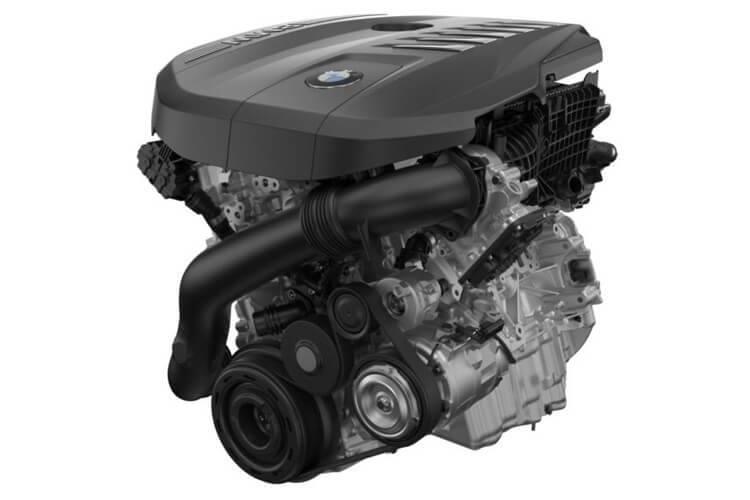The BMW B58 engine debuted in 2015 and replaced the N55, bringing new technology and many improvements which have made it an iconic turbo inline-6. Among these new features is a heat encapsulation system mounted within the engine that helps it retain residual heat for up to 36 hours after shutoff.
How exactly does this engine encapsulation system work, what can you expect from it and what are its main benefits? Let’s take an in-depth look into the heat encapsulation system of the B58 engine.

What is the B58 heat encapsulation system?
BMW’s B58 heat encapsulation system retains heat within the engine, keeping the coolant, oil, and engine block close to operating temperatures for up to 36 hours after turning the engine off.
This is achieved by using heat-retaining materials to layer various components around the engine. Residual heat is effectively contained within the engine block, to keep engine components at optimum temperatures and reduce the amount of heat dissipated into the air and the rest of the engine bay.
If you’ve ever performed maintenance on a B58 engine you may have noticed the extensive use of black foam-like material on top of the valve cover; this is one of the components of the heat encapsulation system.
How well does it work? Our experience
The heat encapsulation system works as intended and keeps the engine close to operating temperatures for extended periods.
After driving our B58-powered 340i, we parked the car in the garage at 8 PM. We started it at 8 AM the following day, and the oil temperature read 150F. The garage was just in the ~70-80F range. The system works as expected, retaining engine heat pretty effectively.
Reaching the full oil operating temperature took only a brisk 5 minutes on the B58. On an N55-powered car, it would have taken at least 15 minutes when starting it after 12 hours.
B58 heat encapsulation system benefits:
1. Reduced startup wear
BMW introduced this system to decrease cold starts, which are hard on the engine and are one of the main contributors to engine wear. It reduces engine wear and tear during startup, particularly in colder temperatures and this can have a noticeable impact on engine life in places with a long winter season.
Cold temperatures thicken oil, putting more strain on the engine block every time you cold start the engine as proper lubrication may not the achieved instantly.
2. Improved efficiency & reduced emissions
Cold-starting an engine results in higher idle RPMs and inefficient combustion. The engine consumes more fuel and generates more CO2 and N2O emissions at low temperatures. When an engine is already up to operating temperature startup is very efficient and the engine can operate at a low idle sooner.
In short, a warm engine is more efficient than a cold one, meaning that the heat encapsulation system not only improves efficiency in the B58 but also reduces harmful emissions.
3. Decreased number of heat cycles
Reducing the number of heat cycles an engine goes through can increase its long-term durability. The extreme temperature fluctuations an engine goes through over time wear the entire rotating assembly and other engine components such as plastics, fittings, gaskets, and even ignition coils.

The internals of an engine expand when hot and contract when cold. Reducing the number of these expansions and contractions means the engine block of the B58 will have a longer lifespan.
The engine block is not the only part of the engine that benefits from this, the gaskets of the B58 are also subjected to less temperature fluctuations and should last much longer than on previous BMW engines. The reduced number of heat cycles is also one of the reasons why valve cover gaskets last much longer on the B58 when compared to the N55.
4. Fast cabin heat
The heat encapsulation system keeping the engine block warm overnight means faster cabin warmp which is especially appreciated during cold winter mornings. Warm coolant and a warm engine mean warm coolant can heat up the heater core faster, and then be transferred to the cabin as warm air.
Having cabin heat readily available also helps to quickly defog windows.
Additional considerations
- Note that after more than ~36 hours of sitting, the engine will most likely be cold. If you drive your car multiple times a day you may rarely encounter an actual cold start.
- Another aspect to consider is the additional labor time when performing maintenance on the B58 or other engines of the B-series family with the heat encapsulation system. Black foam-like material is used on top of the valve cover and other engine areas, and you may need to remove it and then re-install it when servicing certain engine components.
Closing thoughts:
Out of the many new features of the B-series modular family of engines is the heat encapsulation system. The B58 and the B48 benefit from it greatly as it helps keep the engine block and engine oil warm for up to 36 hours.
Even after parking the car overnight, bringing the engine oil up to temperature on the B58 takes just a few minutes as opposed to ~10-15 minutes on previous N-series engines.

